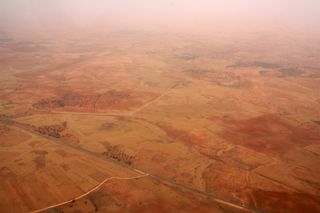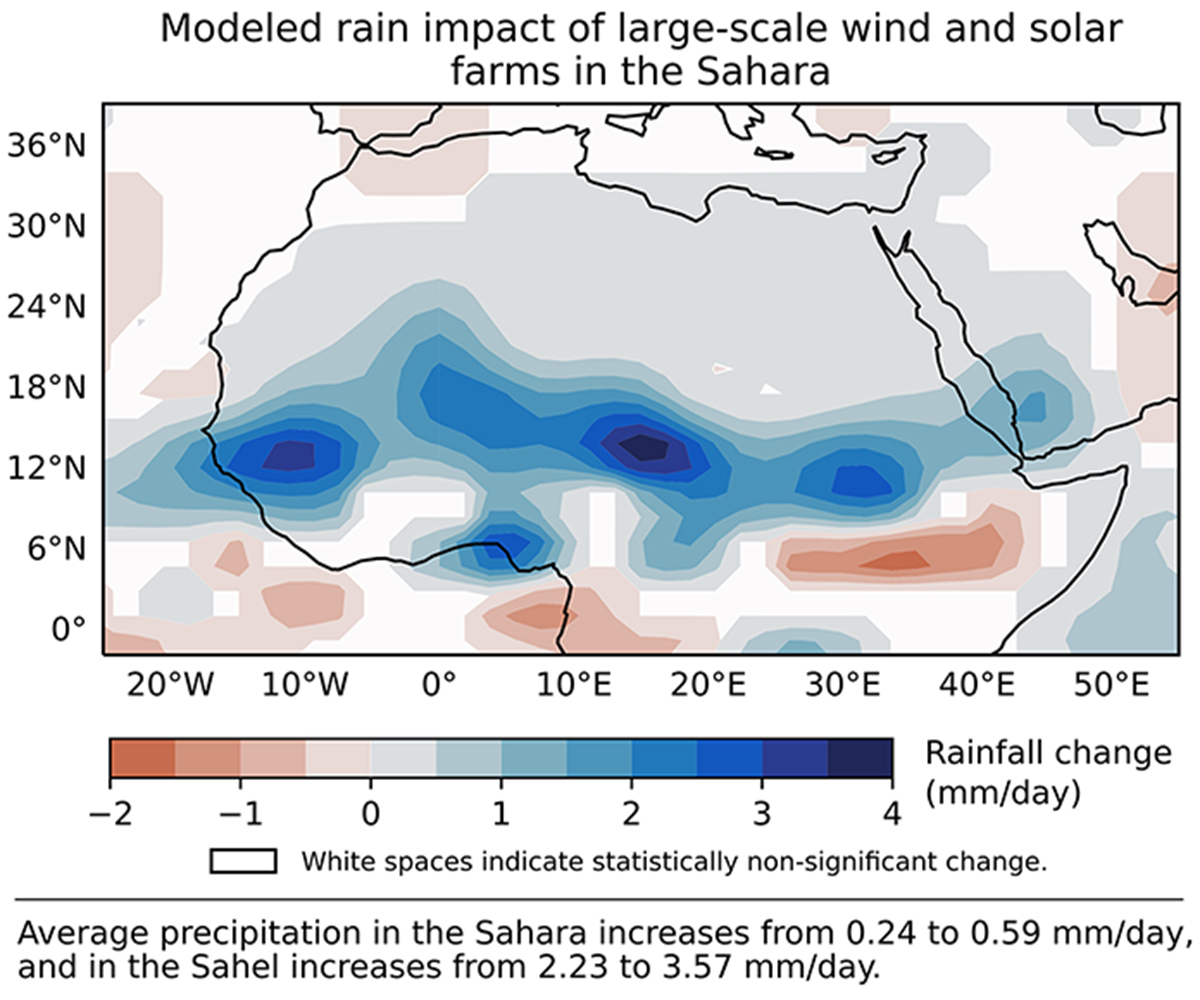Can We Make the Sahara Green Again
Here's How to Make the Sahara Desert Dark-green Over again

The Sahara is the world'due south largest hot desert, but parts of it could be made green if massive solar and current of air farms prepare store at that place, a new study finds.
These farms could increment rain in the Sahara, especially in the neighboring Sahel region, a semiarid area that lies s of the giant desert, the researchers said in the study, which was published online Sept. 7 in the periodical Science.
"This increase in atmospheric precipitation, in turn, leads to an increase in vegetation comprehend, creating a positive feedback loop," study co-pb researcher Yan Li, a postdoctoral researcher in natural resources and environmental sciences at the Academy of Illinois, said in a statement.
Researchers already knew that wind and solar farms tin can increase the heat and humidity in the areas immediately around them. Only this study is among the start to model how wind and solar farms would affect the Sahara, all while considering how growing dark-green plants and trees would respond to these changes, said Li, who started the written report while a postdoctoral researcher in the Section of Atmospheric and Oceanic Science at the Academy of Maryland. [The 10 Biggest Deserts on Globe]
"Previous modeling studies have shown that big-scale wind and solar farms can produce pregnant climate change at continental scales," Li said. "Only the lack of vegetation feedbacks could make the modeled climate impacts very different from their actual beliefs."
Li and his colleagues simulated what would happen if wind and solar farms covered more than 3.iv million square miles (nine million square kilometers) of the Sahara. On average, the wind farms would generate near iii terawatts, while the solar farms would generate 79 terawatts of electrical power in one year, they found.
That'south a lot of free energy. One terawatt can power well-nigh 10 billion 100-watt calorie-free bulbs simultaneously. "In 2017, the global free energy demand was only 18 terawatts, and then this is obviously much more than energy than is currently needed worldwide," Li said.
The model also showed that wind farms acquired localized air temperatures to warm.
"Greater nighttime warming takes place because air current turbines can enhance the vertical mixing and bring down warmer air from to a higher place," the researchers wrote in the study. Rain also increased as much as 0.01 inches (0.25 millimeters) per 24-hour interval, on average, in areas with wind farms, the researchers plant.
"This was a doubling of precipitation over that seen in the control experiments," Li said.

The Sahel would run into even more pelting; an increase of 0.04 inches (1.12 mm) a day in areas with wind farms, which would help vegetation there grow, the researchers said. That translates to an increase of betwixt 8 and twenty inches (200 and 500 mm) of rain a year in the Sahel, enough that it would not be classified as a desert. (Deserts, past definition, are areas that receive less than 10 inches (250 mm) of annual rainfall.)
The solar farms would likewise have a positive upshot on temperature and rainfall, the researchers noted.
"We constitute that the big-calibration installation of solar and current of air farms can bring more than rainfall and promote vegetation growth in these regions," study co-lead researcher Eugenia Kalnay, a distinguished professor in the Department of Atmospheric and Oceanic Science at the Academy of Maryland, said in the statement. "The rainfall increase is a consequence of circuitous land-atmosphere interactions that occur because solar panels and wind turbines create rougher and darker state surfaces."
If this model ever becomes a reality, "the increase in rainfall and vegetation, combined with make clean electricity as a result of solar and wind energy, could help agronomics, economic evolution and social well-being in the Sahara, Sahel, Heart East and other nearby regions," Safa Motesharrei, a systems scientist at the University of Maryland, said in the argument.
"The Sahara has been expanding for some decades, and solar and air current farms might help stop the expansion of this arid region," Russ Dickerson, a leader on air quality research and a professor at the Section of Atmospheric and Oceanic Science at the University of Maryland who was non involved in the study, said in a statement. "This looks like a win-win to me."
Original article on Live Science.
Source: https://www.livescience.com/63556-wind-solar-farms-rain-sahara-desert.html

Post a Comment for "Can We Make the Sahara Green Again"